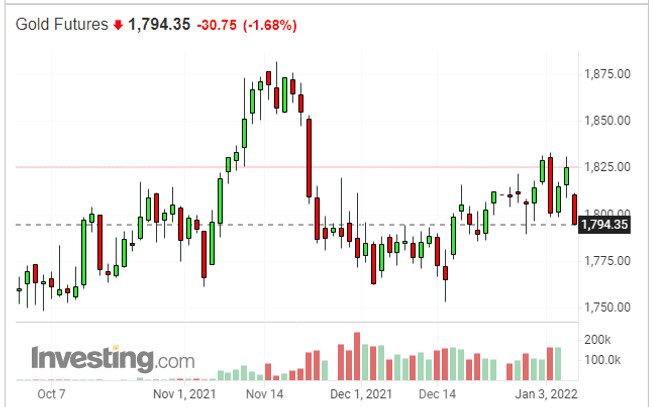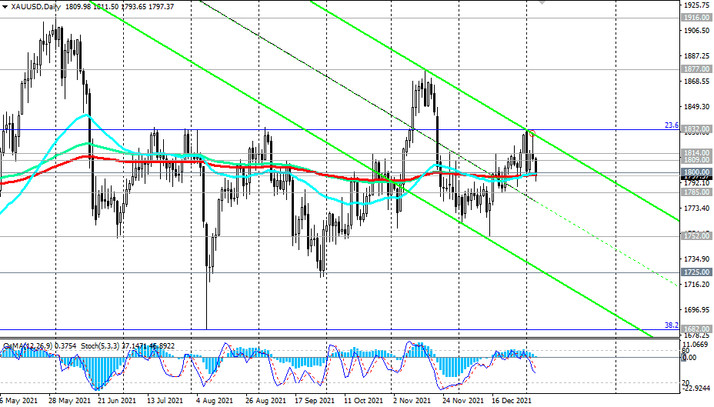The dollar strengthens sharply on Thursday, and a pullback began in the financial markets. As follows from the minutes of the December meeting of the FRS (minutes of the FOMC), published on Wednesday evening, the level of interest rates in the United States may be raised in March, and some market participants and economists now believe that the basic interest rate of the FRS may be raised even earlier than expected previously. Now rates can be raised even before the completion of the FRS's quantitative easing program, and this radically changes the concept that has become established in the market and is embedded in the value of the dollar.
Now, if on Friday expectations for the positive monthly report of the US Department of Labor are justified, it will further strengthen the opinion of market participants that we should expect a more aggressive cycle of raising interest rates in the US (according to the forecast, it is expected that in December in the US 400,000 new jobs outside the agricultural sector, and the unemployment rate fell to a new, since March 2020, low of 4.1%).
Thus, the increasing divergence of the trajectories of the dynamics of monetary tightening in the United States and other countries with the largest economies comes to the fore, creating conditions for the growth of demand for the dollar. Probably, many investors will "pull out of the coffers" the carry-trade strategy, when a more expensive currency is bought at the expense of a cheaper one. This simple strategy is more suitable for long-term investments that bring a stable investment income.
In part, this is already demonstrated by the USD / JPY pair, which has risen sharply in the past few weeks. The yen can still remind of itself as a reliable defensive asset. However, now that concerns about a new slowdown in the global economy due to the omicron strain of the coronavirus have subsided a little, investors are emerging from the protective yen and gold, preferring the dollar. The growing yields on US government bonds are also helping to strengthen the dollar. In particular, the yield on 10-year US bonds jumped today to a 10-month high of 1.744% in the wake of their sell-off.
As for gold, which is also a popular defensive asset, it is falling in price today. So, at the time of publication of this article, upcoming gold futures are traded at a price slightly above $ 1,794.00 per ounce.

As you know, gold does not bring investment income, but it is highly demanded in conditions of uncertainty. However, gold quotes are very sensitive to changes in the monetary policy of world central banks, especially the Fed. And now, with investor confidence that the Fed will start actively raising interest rates (at least 3 times in 2022), the upward trend in gold may be broken. The price has already broken through an important long-term and psychologically significant support level of $ 1800.00 per ounce. If the decline in XAU / USD continues, then the breakdown of the local support level of 1752.00 will create preconditions for a deeper decline.
However, there is still one alarming point. The FOMC minutes published yesterday make little mention of the new omicron strain. However, this was in mid-December, when there were about 836,000 cases of infection in the United States. But last week there were more than 3 million such cases. The increase in morbidity may lead to the introduction of new restrictions and a new slowdown in the economy, which may also affect the mood of the Fed leaders and their further decisions on monetary policy. With the aggravation of the situation and increased uncertainty against the background of growing inflation, gold prices may again return to the zone above 1800.00 with the prospect of retesting the level of 1832.00. Subsequent events and news from the front of the fight against coronavirus are likely to prompt the need for action in one direction or another regarding the dynamics of XAU / USD.






